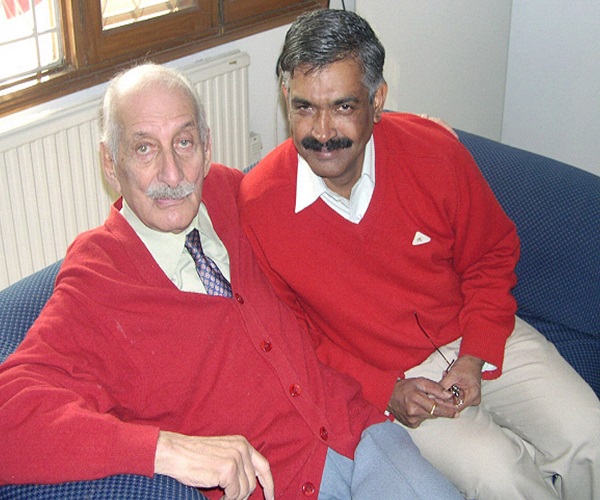World Tuberculosis Day
BNBM Prasad, Lt Gen (Retd. SM, VSM)
Lucknow: As the corona pandemic gripped the entire nation, concerted efforts were made by the Modi Government with great amount of intensity and passion, to contain the wild pandemic with lockdown measures including contact tracing, quarantine and treating symptomatic cases in specialized Covid Care facilities without leaving any room for complacency.
This strategy worked well for India with reduced mortality rates, far better than some of the most advanced countries in the world, notwithstanding hardships to millions and significant economic burden to the nation.
Tuberculosis, a disease known to mankind since ages should have been totally controlled if not eliminated by now, especially when the science has triumphed in validating that the disease is eminently preventable and treatable with available resources. Unfortunately, translation of the scientific knowledge accrued over the years through path breaking research to the needy, seems to be deficient with adverse consequences of far reaching effects, making one vulnerable and insecure.
Evolution of the disease: For thousands of years, tuberculosis remained a mystery, consuming millions of all the spectrum in the society including the poor and the down trodden who are as such the most vulnerable.
No one knew the exact cause, attributing it to anything and everything according to one’s imagination. Thanks to Robert Koch, the legendary German microbiologist, etiology as well as pathogenesis of tuberculosis was validated by scientific methods after his epoch-making discovery of the mycobacterium tuberculosis on 24 March 1982.
He not only isolated the mycobacterium from a tubercular lesion but also proved the infective nature of the disease through his now famous ‘Koch’s Postulates’, laying to rest all the myth about its transmission.
Since then, much water has passed down the Rhine with far reaching advances taking place both in the diagnosis as well as in the treatment of the disease.
Now, an active case of Pulmonary Tuberculosis can be accurately diagnosed within few hours by using Genexpert / CBNAAT that identifies both drug sensitive and resistant organism in the sputum specimen. Further, the extent of the lung involvement can be discerned by cost effective Chest X-ray, enabling an early institution of appropriate short-course chemotherapy as per the standard guideline.
Thanks to the usage in the treatment regime of many potent anti-tubercular drugs that were discovered during the last century, the duration of the treatment to achieve the cure of drug sensitive tuberculosis has come down drastically from two years to six months.
During last two decades, globally 63 million lives were saved by implementing TB treatment strategies. Before the modern day chemotherapeutic era, many were condemned to death in isolation, majority dying within 5 years of the development of the disease.
Current status: Approximately 10 million people in the world had active tuberculosis in 2019 with 1.4 million succumbing to it. These figures may be an underestimation since in many developing countries where 95% of such cases live, have poor access to universal health care. India has the dubious distinction of being global epicentre of tuberculosis, accounting for one fourth of global morbidity and mortality due to tuberculosis.
Everyday about 1400 people die of TB in India with annual estimated death of 4.40 lakh, despite strong measures to contain the disease so as to achieve ‘End TB by 2025’.
Tuberculosis is a great masquerader mimicking many dreaded diseases like cancer, eluding a definitive diagnosis even in an advanced tertiary care Centre.
Emergence of drug resistance both multi drug resistance(MDR)and extensively drug resistance(X-DR) among many suffering from active TB, has made the disease almost incurable by using currently available anti- tubercular chemotherapy.
In India around 1, 24,000 cases of drug resistant cases have been reported in 2019 which is about one third of the global incidence. Such cases are a grave threat to others by virtue of their ability to transmit this most dreaded TB infection to the non-infected close contacts through aerosol generation similar to COVID-19 transmission.
It is well established now that an infectious case before being detected has already infected 10 or more people, adding to a pool of infection in the community. Unlike many infectious diseases, TB bacillus persists in the body of the infected one in the latent form, with approximately 10% among them developing a full-blown disease during their life time.
It is estimated that one third of the world population are already infected. The incidence of active cases developing among infected latent cases will reach to an epidemic proportion when such cases become immuno-compromised.
In such a scenario, even the most advanced countries are likely to be found wanting in containing the outbreak if the experience of tackling COVID-19 pandemic is to be believed.
Epidemics due to dual infection of HIV (Human immunodeficiency virus) and TB in many parts of Sub-Sahara Africa is a grim reminder that an entire community can be engulfed and wiped out in no time by this deadly duo.
TB control in India : Tuberculosis control programme under the Ministry of Health, Government of India, during last six decades of functioning, has been striving relentlessly to control the disease by incorporating modern day technology and latest guidelines for early case detection and treatment of active cases.
Honest efforts are on through public and private participation to reach out every part of the country for making the programme to succeed so as to ‘End TB by 2025’.
Undoubtedly, India is far ahead of many countries in programme implementation with declining trend in various epidemiological indices and if this trend continues, it is a matter of celebration for realizing ‘End TB 2025’ much ahead of many other countries having high TB burden.
However, despite declining trends, one is not sure whether India will be able to achieve ‘End TB’ In the near future wherein the incidence and mortality of the disease will be reduced by 80% and 90% respectively, with the elimination of catastrophic costs of TB affected households.
Setbacks: TB control has taken a beating with the corona pandemic gripping the nation despite achieving significant success at the gross root level during last 2 decades.
In India with complex web of health care system involving both government and private sector, containing the disease to achieve ‘End TB by 2025’ is a daunting task demanding herculean efforts at every level of the programme implementation.
The WHO has realized that much needs to be done to achieve globally ‘End TB by 2030’, demanding urgent measures by all stake holders and has cautioned them that the time is running out and the clock is ticking fast.
For realizing this vision of ‘End TB’, unity of purpose, universal access to health care facility and strict implementation of TB control with ‘no nonsense results oriented time bound approach’, plugging all the loopholes are most essential.
These are extraordinary times requiring extraordinary efforts if our fight against TB has to succeed.
This corona pandemic has reminded us that with a willing government and the people, it is possible to make a difference for the better, notwithstanding many difficulties.
The entire nation showed solidarity in stringently following all measures as deemed appropriate to contain the raging pandemic. Mortality and morbidity due to TB is significant when compared to those due to COVID- 19 infection. Unless we act unitedly with the same intensity and passion as is being shown during present Corona pandemic, our fight against TB is unlikely to succeed.
Future of TB eradication: One can assume with certainty that tuberculosis cannot be wiped out from the globe in the near future unlike small pox despite tremendous advancements in the understanding of the disease.
This disease has survived for thousands of years and therefore is likely to survive in the future as well due to the vulnerability of the human host, thanks to modern day life style and indiscriminate use antimicrobials.
Now it is established that the ability of the human body to resist infection is highly dynamic that is influenced by both genetic and environmental factors including microbiota especially the gut flora.
It is a known fact that trillions of microbes which dwell inside the human host are symbiotic in nature offering protection from many dreaded diseases including, cancer, degenerative disorders and superinfection due to overuse of antibiotics.
When the human host is weak and vulnerable, TB is going to stay. An holistic approach of harmonizing micro and macro-environment that is combined with early detection and appropriate therapy of both active and latent tuberculosis respectively can make one day our globe ‘TB Free’ and that day seems to be not so near.
The real antidote to Tuberculosis is a healthy society that is not only free from the disease but also happy and secure.
BNBM Prasad is former Director General Hospital Services (Armed Forces) & renowned Pulmonologist
The views expressed are personal.





